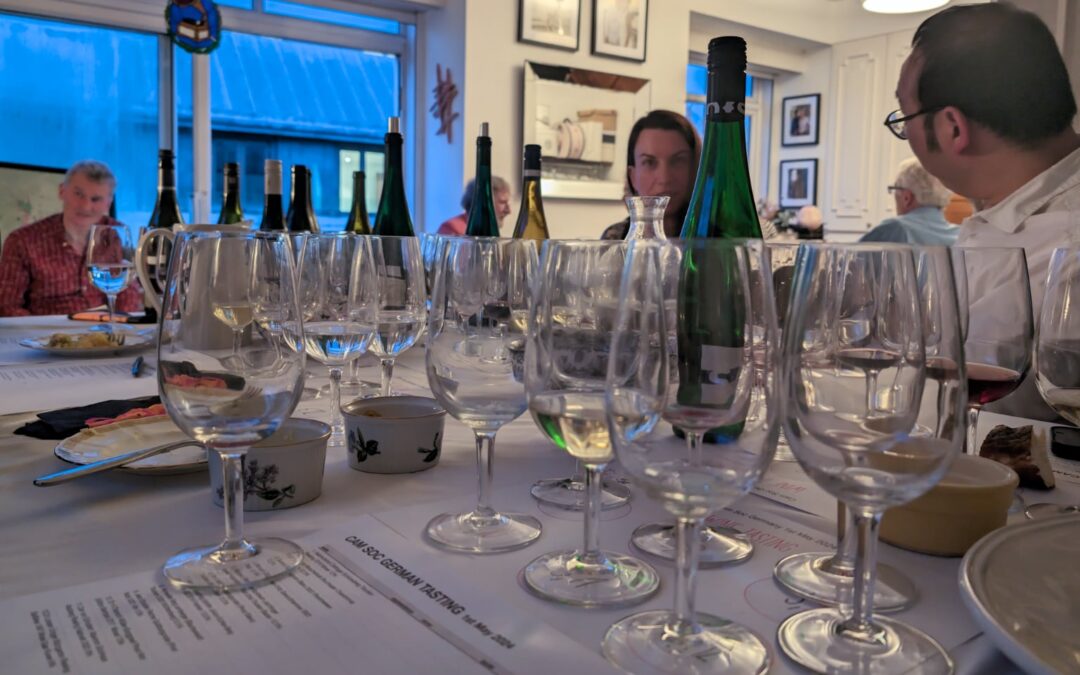Germany is most famous for the grape variety Riesling, which many people assume is unfashionably sweet. There is history behind this. German Rieslings at the end of the 19th Century were the most sought after wines in the world – they were more expensive than the greatest French Bordeaux. (Even today, the world’s most expensive white wine on release is often Egon Muller’s Scharzhofberger Riesling Trockenbeerenauslese – the 2018 is available by the bottle from Cru for a mere £15,775, and it is sweet.) Because German wine labels are extraordinarily complicated (just look at our drinking list below), people do not realise how much that has changed and how much dry Riesling, as well as wine from other grapes, is now made in Germany. Richard hoped to prove it to our wine tasters this evening, with an ambitious tasting of 12 wines, 9 of them whites, 10 of them dry and many with a pocket friendly price. No, we didn’t try the Egon Muller.
Dry Whites
- Heinrichshof Zeltinger Schlossberg Trocken Riesling 2016 Mosel 12%
- Seehof Sauvignon-Blanc 2022 Rheinhessen 12.5%
- Klumpp Muschelkalk Bruchsaler Chardonnay 2022 Baden 12.5%
- Weingut Bercher-Burkheim Jechtinger Grauburgunder (Pinot Gris) Trocken 2022 12.5%
- Weingut Jülg Jean -Fritz Gewurztraminer 2022 Pfalz 12.5%
- Toni Jost Weissburgunder (Pinot Blanc) Trocken Mittelrhein 13.5%
- Hans Wirsching Iphöfer Julius-Echter-Berg Silvaner GG 2019 Franken 13.5%
Dry Reds
- Hanweiler Berg Lemberger (Blaufrankish) Trocken 2020 13.5%
- Jean Stodden Recher Spätburgunder (Pinot Noir) 2021 Ahr 13%
- Dr H Thanisch Müller-Burggraef Pinot Noir Edition Barrique 2017 Mosel 13%
Sweet Whites
- Carl von Schubert Maximin Grünhaus Abstberg Riesling Kabinett 2022 Mosel 8%
- Dr Loosen Ürziger Würzgarten Riesling Spätlese 1997 Mosel Saar Ruwer 8%
Organised by Richard Pearey

